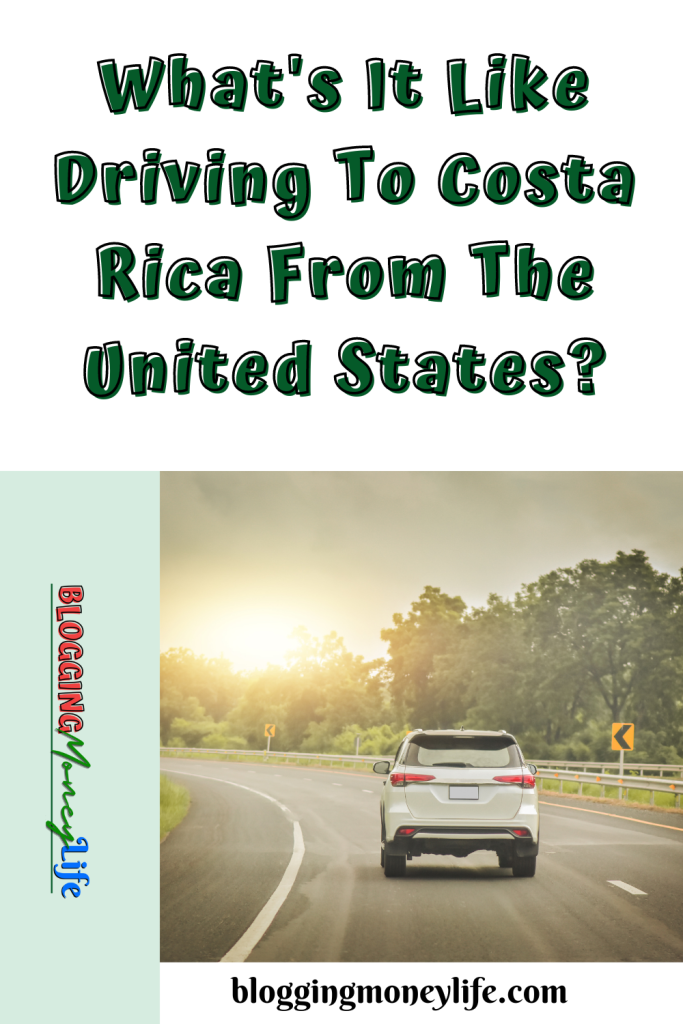What’s It Like Driving To Costa Rica From The United States?

Going on a cross-country road trip is really exciting for many travelers. The freedom of the open road, the promise of beautiful landscapes, and the opportunity for adventure all contribute to the experience. One journey that promises an unforgettable experience is the drive from the United States to a beautiful country like Costa Rica.
From busy cities to remote rural areas, this road trip offers a glimpse of diverse cultures and stunning natural beauty. In this guide, we’ll explore what it’s like to undertake this epic adventure, from preparation to reflection.
Preparing for the Adventure
Before setting out on any road trip, thorough preparation is critical. This preparation takes on various circumstances due to international travel from the United States to Costa Rica. Ensuring you have the necessary travel documents, like your valid driver’s license, car title, and passport, is essential. This includes a valid passport, required visas, vehicle registration, and insurance documents.
Packing for such a journey requires careful consideration of the different climates you’ll encounter along the way. From the dry deserts of northern Mexico to the lush rainforests of Central America, packing various clothing is essential. Also, stocking up on road trip snacks and supplies ensures sufficient food for the long drive ahead.
Route Planning
Choosing the right starting point for your journey depends on various factors, including your location in the United States and your preferred route into Mexico. Popular departure cities include San Diego, California, and Laredo, Texas, each offering different border-crossing options.
Traveling through Mexico requires careful planning to ensure a safe and enjoyable journey. Researching safe routes and recommended stops can help you make the most of your time in this culturally rich country. From exploring ancient ruins to trying out authentic cuisine, there’s no shortage of experiences.
Crossing Borders
Crossing borders during a road trip from the United States to Costa Rica is a significant aspect of the journey, requiring understanding border regulations and overcoming language barriers.
When crossing through different countries, it’s essential to be well-versed in the customs procedures of each. In Mexico, for instance, travelers must adhere to specific regulations. This includes readily available paperwork such as passports, vehicle registration, and insurance documents.
Moreover, travelers may require additional permits depending on the vehicle type and the duration of their stay. Researching and preparing these documents well in advance is crucial to avoid any issues or delays at the border.
Language barriers can pose challenges, particularly in countries where English is not widely spoken. Basic Spanish phrases can significantly facilitate communication during border crossings and interactions with authorities.
Aside from that, language apps and translation tools can serve as valuable resources for overcoming language barriers. These tools provide instant translations and help travelers converse smoothly with border officials.
On the Road: Driving Through Mexico
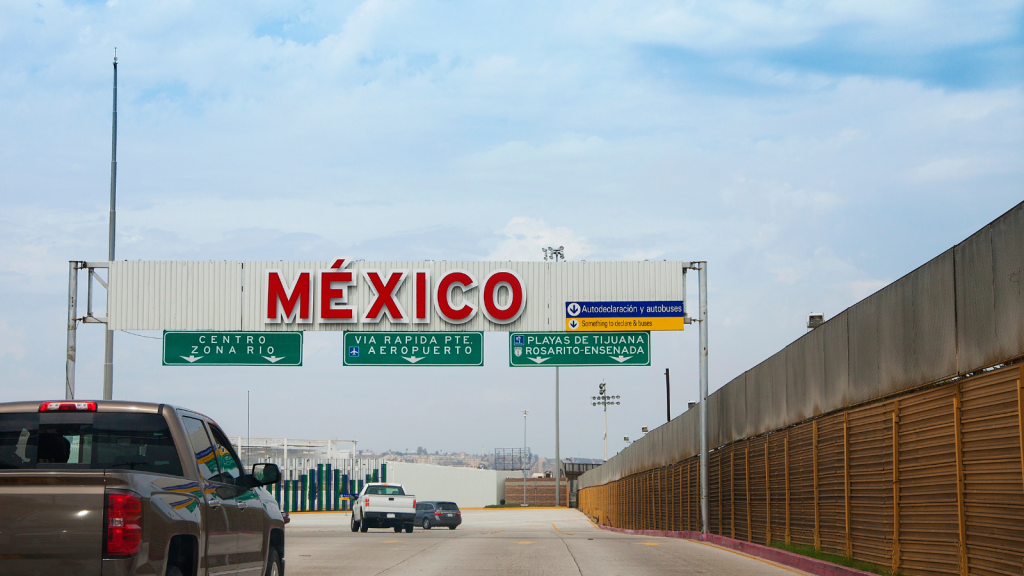
The first thing is road conditions can vary significantly across Mexico, from well-maintained highways to rough and unpaved roads. The best way to do this is to be prepared to handle diverse terrains by ensuring their vehicle is equipped for the journey. Opting for the correct type of car, preferably with four-wheel drive capabilities, can provide added traction and stability, especially when navigating dirt roads or encountering unexpected obstacles.
Also, driving an automatic transmission could save you more effort than using a manual transmission. Maintaining a cautious and defensive driving approach is crucial, particularly on narrow roads or rural areas where road conditions may be less than ideal.
Weather considerations also play a significant role in driving through Mexico. The country’s climate can range from arid deserts to heavy rains in tropical rainforests, with weather patterns varying depending on the region and time of year. During the rainy season, typically from May to October, road conditions can deteriorate rapidly, leading to flooded roads and landslides in certain areas.
Travelers should stay informed about weather forecasts and road conditions, adjusting their itinerary to avoid potentially hazardous situations. It is preferable to travel during the dry season for a safer journey, but be sure to bring refreshments along the way as temperatures could spike anytime, causing extreme dehydration and fatigue.
Finding accommodation along the route through Mexico offers a range of options to suit different preferences and budgets. Plenty of affordable lodging choices for practical travelers include roadside motels, guesthouses, and campgrounds. These options provide basic amenities at reasonable prices, making them ideal for those looking to minimize expenses while on the road.
From eco-lodges in the heart of the jungle to charming bed and breakfasts in colonial towns, travelers can find accommodations that reflect the country’s rich cultural heritage and natural beauty. Staying in these unique establishments adds an extra layer of adventure to the journey and allows travelers to immerse themselves in the local culture and hospitality.
Embracing Local Cuisine
Appreciating local cuisine is an integral part of any travel experience. Mexico offers a lively and exciting culinary industry that tantalizes travelers’ taste buds worldwide. As you journey through Mexico on your road trip, exploring the country’s rich food culture is an adventure.
Several must-try dishes bring out the essence of Mexican cuisine and are worth trying along the route. Tacos, perhaps the most iconic Mexican street food, come in endless varieties, from succulent carne asada to spicy chorizo and flavorful al pastor. Stop by roadside taquerias or street food stalls to savor these handheld delights with bold flavors and fresh ingredients.
Another staple food in Mexico City not to be missed is the hearty and aromatic pozole. This traditional soup features hominy corn simmered in a rich broth with tender chunks of meat, typically pork or chicken, and seasoned with various spices and herbs. You can consume it as a comforting meal or a banquet dish during festivals and special occasions; pozole will leave a lasting impression.
As you venture off the province part of the country, watch for hidden gems that offer authentic regional specialties and flavors. From bustling market stalls serving regional delicacies to humble roadside eateries dishing out time-honored family recipes, these local culinary treasures provide a glimpse into the soul of Mexican cuisine.
In coastal regions, indulge in fresh and flavorsome seafood dishes such as ceviche, a zesty and refreshing appetizer made with marinated raw fish or shrimp, lime juice, chili peppers, and fresh herbs.
Meanwhile, inland areas boast a rich combination of flavors, with dishes like mole poblano, a complex and savory sauce made from a blend of chili peppers, chocolate, and spices, served over tender chicken or turkey.
Immersing in Cultural Experiences
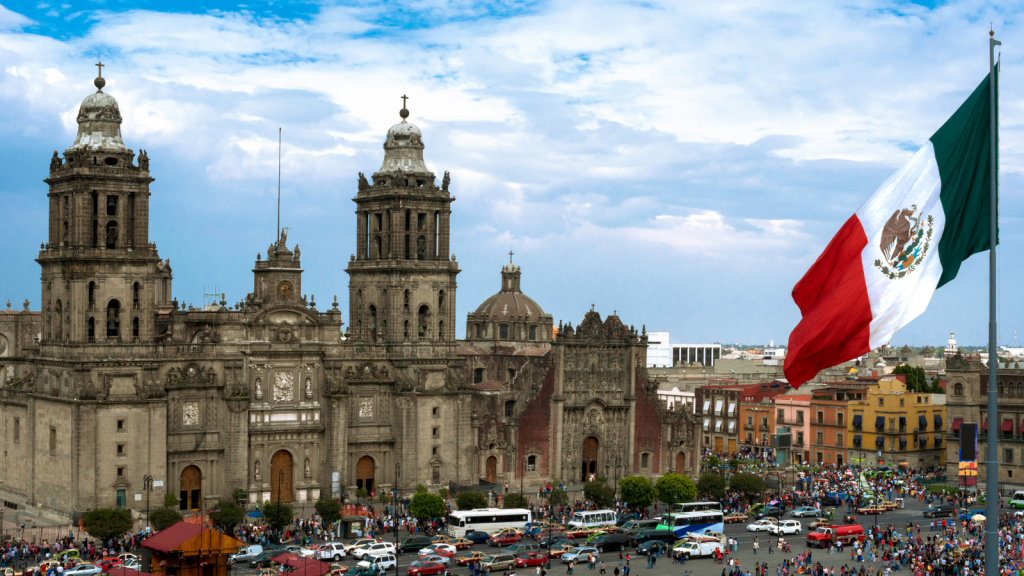
Getting involved in cultural experiences is a big part of your trip through Mexico. It’s about getting to know the people and their traditions. Engaging with traditions and festivals lets you see how Mexicans celebrate.
From the colorful Day of the Dead to the lively Carnaval, these events show you what’s essential to Mexican communities. They’re also a chance to meet locals and make new friends.
Exploring historical sites is like stepping back in time; your best option is to get to know the country more. Mexico has lots of old places to visit. For example, Teotihuacan has enormous pyramids that were built long ago.
Chichen Itza is another famous spot with tall pyramids and carvings made by the Maya. You can also visit towns like Oaxaca and Guanajuato, which have old buildings and cobblestone streets.
The Journey Continues: Reaching Central America
Crossing the border into Guatemala brings both similarities and differences compared to Mexico. Like Mexico, Guatemala has customs procedures and regulations you must follow. Make sure you have all your documents in order, including passports and vehicle permits.
Be prepared for checkpoints, where officials may check your paperwork and inspect your vehicle. Understanding these procedures beforehand can help streamline the border crossing process and minimize delays.
Once you’re in Guatemala, you’ll notice similarities and differences compared to Mexico. Like Mexico, Guatemala has a rich cultural heritage and diverse landscapes, from lush rainforests to towering mountains. However, you’ll also encounter unique customs, traditions, and cuisines that set Guatemala apart from its northern neighbor. Grab the opportunity to explore these differences and experience the colorful and lively Guatemalan culture.
As you make your way through Central America, take advantage of the opportunity to explore the region’s breathtaking views. Central America is renowned for its natural beauty, scenic routes, and picturesque views around every corner.
From winding mountain roads to pristine beaches and dense jungles, there’s no shortage of stunning vistas to admire along the way. For a smoother driving experience, the best advice is to be aware of the rules of the road, like speed limit signs, and be mindful of speed bumps.
Consider taking an alternate route to discover hidden gems and lesser-known attractions. Whether it’s a secluded waterfall, a tranquil lakeside village, or a panoramic overlook, these hidden treasures offer a chance to connect with nature and experience the true beauty of Central America.
Challenges and Solutions
One of the most daunting challenges you might encounter is a vehicle breakdown. A breakdown can quickly derail your plans, whether a flat tire, engine trouble, or any other mechanical issue. The key to overcoming this challenge is to be prepared. Before leaving on your journey, ensure your vehicle is in good condition by scheduling a thorough inspection and addressing any maintenance issues.
So, it is vital to pack a roadside emergency kit with essentials like a spare tire, jack, jumper cables, and other essential tools.
If you experience a breakdown on the road, stay calm and assess the situation. If it’s a minor issue, you can fix it yourself, such as changing a tire, following proper safety procedures, and getting back on the road as soon as possible. For more severe problems requiring professional assistance, contact roadside assistance or a local mechanic for help. Having a reliable roadside assistance service or knowing the location of nearby repair shops can save you time and hassle in a breakdown.
Another challenge you may encounter is unforeseen delays, such as traffic congestion, road closures, or inclement weather. While these delays can be frustrating, remaining flexible and adapting to changing circumstances is essential. Plan by checking traffic conditions and weather forecasts before starting your journey, and have alternate routes in mind in case of unexpected detours or closures.
If you encounter a delay on the road, use the opportunity to stay positive and make the most of the situation. Take the opportunity to explore nearby attractions, enjoy a meal at a local restaurant, or simply relax and take in the scenery while you wait for conditions to improve. Remember that delays are a normal part of travel, and maintaining a positive attitude can help turn a challenging situation into a memorable experience.
Costa Rica: The Final Stretch
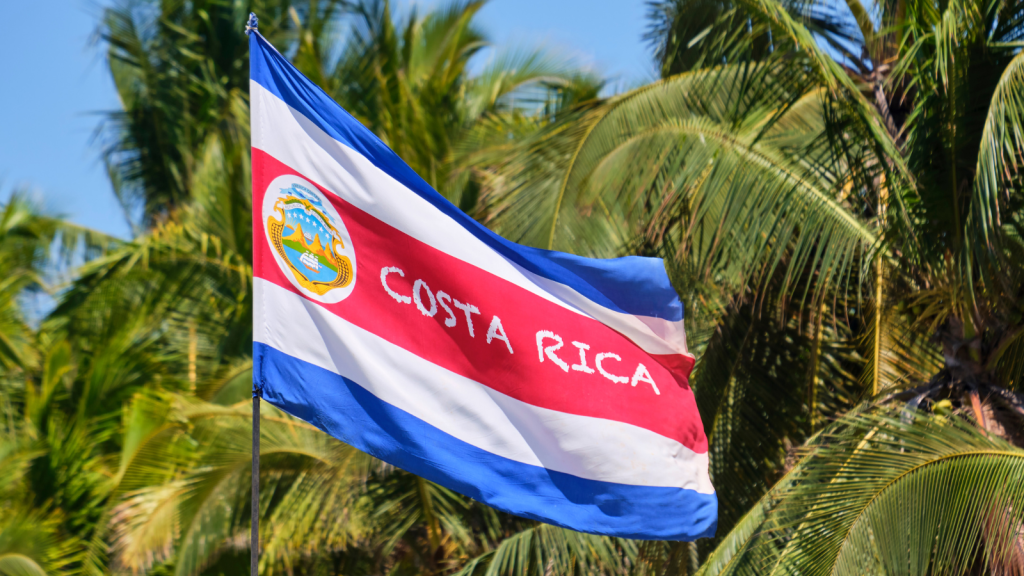
Going on a road trip through Costa Rica, known for its natural beauty and ecotourism, offers benefits and challenges. The country has a well-maintained network, including highways connecting major cities and scenic routes that wind through picturesque countryside.
However, be prepared for varying road conditions, especially in rural areas with familiar unpaved roads and potholes. So, drive cautiously and be mindful of speed limits to ensure a safe journey.
While GPS navigation can be a valuable tool for getting around, combining it with local knowledge and navigation tips is essential. Costa Rica’s landscape can be rugged and remote, with some areas lacking reliable GPS signals. Familiarize yourself with local landmarks, road signs, and directions provided by locals to avoid getting lost.
Moreover, consider downloading offline maps or using navigation apps like Google Maps that offer real-time updates on road conditions and traffic.
As you near your destination, whether it’s a beachside resort, a jungle lodge, or a quaint mountain town, take a moment to celebrate the completion of your journey. Reflect on the miles traveled, the sights seen, and the memories made along the way. Treat yourself to a delicious meal at a local restaurant, raise a toast to your fellow travelers, and savor the accomplishment of reaching your goal.
Upon arriving in Costa Rica, take the time to enjoy the country’s lively culture and relaxed lifestyle. Whether it’s sampling traditional dishes like gallo pinto (rice and beans) or casado (a typical Costa Rican meal), exploring local markets and craftsman shops, or simply soaking up the sun on a pristine beach, know the pura vida (pure life) spirit that pervades Costa Rican culture.
Settle into your surroundings and embrace the slower pace of life, allowing yourself to unwind and recharge after the long journey. Whether you’re lounging in a hammock, taking a dip in a natural hot spring, or embarking on a thrilling adventure like zip-lining through the rainforest or surfing along the Pacific coast, take the time to appreciate the beauty and peaceful ambiance of Costa Rica.
As you bid farewell to the open road and settle into Costa Rican culture, let the memories of your road trip journey continue to inspire and enrich your life. Whether exploring new destinations, forging connections with fellow travelers, or simply enjoying the joy of discovery, the spirit of adventure lives on in every mile traveled and shared experience. Soak it all in, and savor the magic of Costa Rica as you begin this final stretch of your road trip adventure.
Reflections on the Road Trip
As your road trip draws close and you reflect on your incredible journey, it’s natural to reminisce about the personal anecdotes and highlights that have made this adventure unforgettable.
One of the trip’s most memorable moments was stumbling upon a hidden beach on Mexico’s Pacific coast. After a long day of driving through rugged terrain, we decided to detour down a dusty dirt road that led us to one of the best tourist areas.
As we stepped onto the fine sand and dipped our toes into the crystal-clear water, we felt a sense of serenity and awe at the natural beauty surrounding us. It was a spontaneous discovery that reminded us of the joys of exploration and unlocking mysteries.
Another highlight of the journey was connecting with local communities along the way. From sharing meals with families in small towns to learning traditional dances from indigenous groups, these interactions provided a deeper insight into the rich tapestry of cultures that make up Mexico and Central America. Whether exchanging stories with friendly locals or participating in local customs and traditions, these experiences left a lasting impression and enriched our understanding of the places we visited.
As we look back on the road trip, we can’t help but reflect on the lessons learned from the adventure. One of the most valuable lessons was the importance of flexibility and adaptability in facing unexpected challenges. From going through unfamiliar terrain to overcoming language barriers and navigating border crossings, we learned to accept uncertainty and approach each obstacle with resilience and resourcefulness.
Another lesson learned was the power of connection and community in enriching the travel experience. Whether striking up conversations with fellow travelers at roadside cafes or creating fruitful friendships with locals in remote villages, we discovered that the most meaningful moments often arise from human connection and shared experiences.
By opening ourselves up to new people and perspectives, we were able to cultivate a safe place to enjoy even if you are not in your home country.
Practical Tips for Future Road Trippers
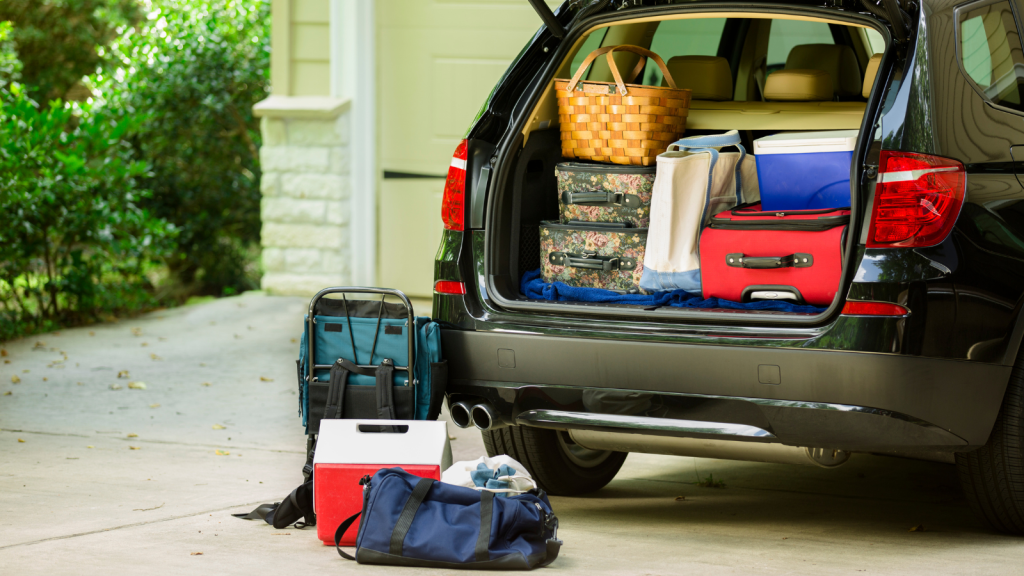
We’ve gathered the most essential things to share with fellow travelers who want to consider beginning their own epic adventures. Here are some recommendations to help you make the most of your journey:
Dos on the Road:
- Plan your route ahead of time: Research your itinerary, including key stops, attractions, designated parking lots, and accommodations, to ensure a smooth and enjoyable journey.
- Pack light and efficiently: Pack only the essentials and prioritize much-needed clothing and gear to maximize space and convenience.
- Do prioritize safety: Regularly inspect your vehicle, wear seat belts, be aware of street signs, and obey traffic laws to ensure a safe and secure journey for yourself and your fellow travelers.
- Do accept spontaneity: Leave room for unexpected side trips and discoveries in your itinerary.
- Respect local customs and traditions: Learn about the cultures and customs of the places you’ll be visiting, and be mindful of local norms and etiquette.
- Do stay flexible: Be prepared to adapt to changing circumstances, whether it’s weather delays, road closures, or unexpected challenges.
Don’ts on the Road:
- Don’t drive tired or distracted: Take regular breaks, stay hydrated, and avoid distractions like texting or using your phone while driving.
- Don’t overlook travel insurance: Invest in comprehensive travel insurance to protect yourself against unforeseen emergencies, including medical expenses and trip cancellations.
- Don’t rush: Take your time to savor the journey and enjoy the scenery rather than running from one destination to the next.
- Don’t forget to budget: Plan your expenses ahead of time, including toll booths, high gas prices, accommodations, meals, and activities, to avoid overspending.
- Don’t ignore local laws and regulations: Familiarize yourself with traffic laws, speed limits, and road signs in the countries you’ll be traveling through, and abide by them accordingly.
- Don’t underestimate the power of rest: Prioritize rest to prevent burnout and ensure a rejuvenating travel experience.
Resources for Planning Similar Journeys:
- Online travel forums and communities: Websites like TripAdvisor, Lonely Planet, and Reddit offer valuable insights, tips, and recommendations from fellow travelers who have tried similar journeys.
- Travel blogs and vlogs: Follow travel bloggers and vloggers specializing in road trips and adventure travel for inspiration, practical advice, and firsthand accounts of their experiences.
- Guidebooks and maps: Invest in guidebooks and maps specific to the regions you’ll be visiting to help plan your itinerary and navigate the terrain.
- Travel agencies and tour operators: Consider hiring the services of reputable travel agencies or tour operators that specialize in organizing road trips and adventure tours.
- Government websites and resources: Check official government websites for travel advisories, visa requirements, and safety information for your visiting countries.
- Social media and networking: Connect with fellow travelers and road trip enthusiasts on social media platforms like Instagram, Facebook, and Twitter to exchange tips, share experiences, and build a community of fellow adventurers.
Conclusion
From the excitement of cross-country exploration to the thrill of discovering new landscapes and cultures, the drive to Costa Rica offers plenty of opportunities for adventure, discovery, and personal growth. Whether traveling through rugged terrain, navigating through busy cities, or enjoying yourself in the quiet ambiance of remote villages, each mile traveled brings a sense of excitement and possibility.
From the breathtaking landscapes of Mexico to the exciting cultures of Central America, each moment has been a treasure to cherish and a reminder of the beauty and diversity of our world.
And so, as we conclude our epic road trip adventure, we encourage travelers to explore the drive to Costa Rica. Whether you’re a frequent cross-country adventurer or a first-time traveler, there’s no better way to experience the beauty and wonder of Central America than by hitting the open road and starting your own journey of discovery.
So pack your bags, fuel up your vehicle, and embark on an adventure of a lifetime. Perfect if you’re seeking adrenaline-pumping adventures, cultural immersion, or simply the freedom of the open road, the drive to Costa Rica promises an unforgettable experience that will leave you with memories to last a lifetime.
